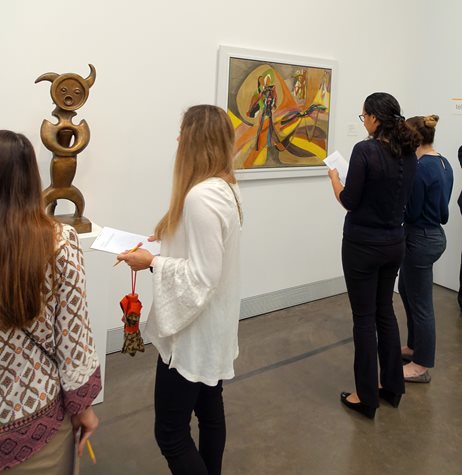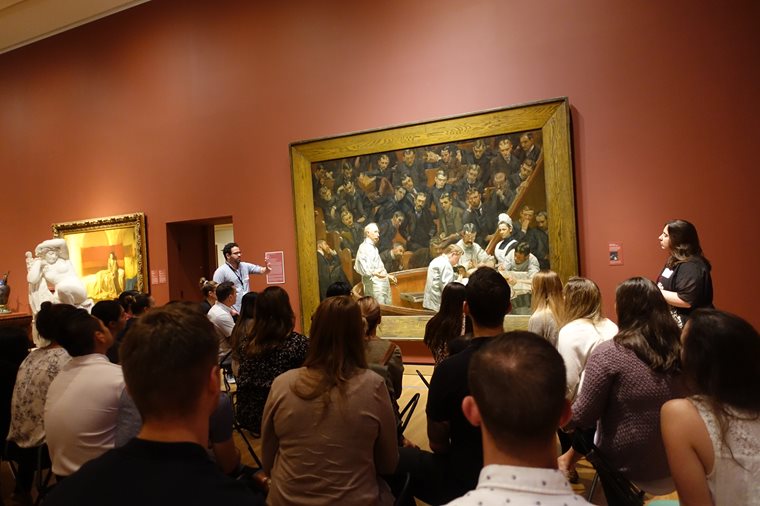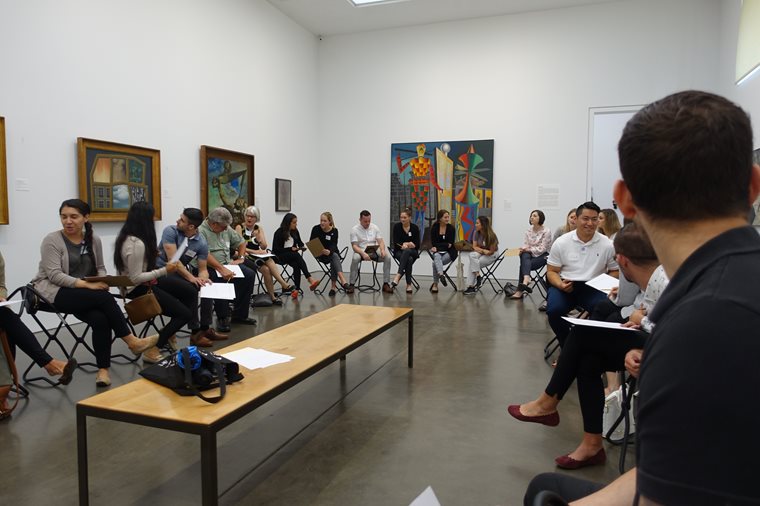 Students from the University’s Physician Assistant Studies (PA) program returned to the Philadelphia Museum of Art (PMA) to complete the third and final session of The Art of Observation workshop series. The program was created to help first year students become more aware of their personal biases, and to improve observation, listening, interpretation, communication and empathy skills when working with patients, their families, and collaborating as a member of a clinical team.
Students from the University’s Physician Assistant Studies (PA) program returned to the Philadelphia Museum of Art (PMA) to complete the third and final session of The Art of Observation workshop series. The program was created to help first year students become more aware of their personal biases, and to improve observation, listening, interpretation, communication and empathy skills when working with patients, their families, and collaborating as a member of a clinical team.
Venturing out of the lecture hall and into the galleries of the world-class art museum is part of the series’ design, explained Rachel Ditoro, PA-C, Director of Educational Competency for Salus’ PA program. “We are using an unconventional environment to teach our students to be learners. Science and medicine are evolving continuously. By stepping out of the classroom we are using art to explore a patient’s point of view, and to recognize our biases as well as our patients’ perspective with the intent of becoming more effective practitioners.”
The May workshop began with students gathered in the museum’s gallery to examine Philadelphia painter Thomas Eakins’ The Agnew Clinic. The seven- by ten-foot oil painting depicted a graphic surgical room scene from a late 19th century lecture at the University of Pennsylvania medical school. The discussion began with students’ objective observations by inventorying the medical, technological and sterile procedures used. The conversation expanded into subjective observations about the portrait’s subjects – the lecturer Dr. Agnew, the surgeon, medical students, the patient receiving a mastectomy, and a nurse -- identifying how factors such as gender and age can influence ones’ perspective, offering the PA students an opportunity to identify bias.

“This [last] session can be really challenging for some people because it forces them to think critically about their own subjectivity and how it can affect their interpretation and interactions with people,” said PMA art educator Adam Rizzo, who co-facilitated the workshops with Suzannah Niepold, also a museum educator.
Students then broke off into small groups and were given an opportunity to read an “official” description of the scene depicted in Eakins’ portrait. Finally, they reassembled to share their perspectives with the entire group. During the discussion the facilitators revealed that the students had read two differing descriptions of the portrait’s scene based on subjective language, and were able to identify how preconceived viewpoints can evoke biased perceptions.
Upon reflection, it became clear how an opinion could be swayed. “I was pleasantly surprised that both groups engaged with the material in a very thoughtful manner,” Rizzo said. “We challenged them to think about biased language and personal biases in relation to the artworks we were exploring, but also extend their thinking out to how things we were exploring relate to their chosen field of study.”
Another exercise explored perspective-taking and the final discussion focused on personal reflection. Perspective-taking involved a 19th century painting where race, age, gender and class were explored as students were asked to “step inside” the viewpoint of one of the painting’s figures.

The final gallery activity was intended to give students the opportunity “to reflect on both the challenges they have faced in their first year of study, and, also remind themselves of why they chose to go into this field in the first place,” explained Rizzo. Using abstract, contemporary multi-media pieces as a launch, students were given writing prompts to reflect on their personal experiences as first-year PA students: select a work of art that reflects a challenging experience; and consider a piece that reminds the student of something personally valuable about the practice of medicine.
“It was powerful seeing students openly share their struggles with their peers in a way that I hope created a greater sense of community and shared experience,” Rizzo said.
Concluded Ditoro, “Everyone has personal perspectives and biases created by their life experiences – we can’t turn those off when we interact with patients. The goal of this exercise is to help students identify what those biases so they don’t interfere with their ability to support their patients’ needs.”